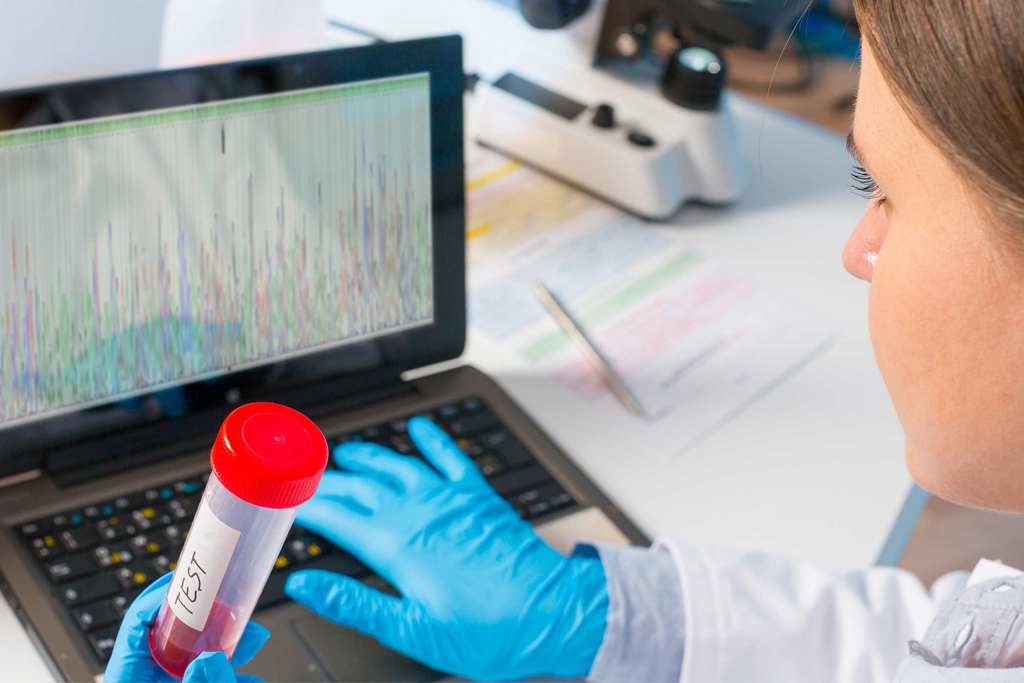How DNA Sequencing is Used to Fight Disease

Genomic and DNA sequencing holds the key to a promising future for disease prevention.
Genetic data research can reveal a person’s risk of developing certain types of cancer, diabetes, Alzheimer’s disease, as well as several other diseases and conditions. In addition to improving diagnosis of conditions, gene sequencing is also used to determine what treatments might be effective.
The Value of Genomic and DNA Sequencing
Genomics is a branch of genetics that studies organisms in terms of their genomes, or full DNA sequences. The human genome is the huge collection of genes inside each and every one of a person’s cells.
Genomic sequencing is used to decipher the genetic material found in an organism or virus, according to the Centers for Disease Control and Prevention. Sequences from specimens can be compared to help scientists track the spread of a virus, how it is changing, and how those changes may affect public health. The power of gene sequencing was witnessed as scientists monitored COVID-19 in real time. They had insight into attributes and the path of the virus, enabling them to develop a vaccine quickly.
In addition to screening for the risk of diseases, DNA sequencing has applications in gene therapy-based treatments and genetic engineering. For these applications, scientists start by discovering specific gene variants and the effect they have on people’s health. Some might predispose them to certain conditions. Analyzing the genetic code, or genome, gives them the power to fight diseases.
How Genomic Sequencing Works
The Mayo Clinic offers details about the process of gene sequencing in the lab:
- Technicians extract DNA and prepare it for sequencing.
- To read the sequence of the chemical letters called bases in DNA, samples are inserted into a sequencing instrument where high-frequency soundwaves break the DNA into smaller pieces.
- Special tags are added to the ends of the fragmented DNA and these tagged strands of DNA can then attach to a glass slide.
- In a sequencer, each piece of DNA is copied hundreds of thousands of times, which creates clusters of identical DNA fragments.
- Next, the sequencer reads the DNA one base at a time using different colored tags for each DNA base. Special sensors within the machine detect the different colored tags. This sequence of colors reveals the DNA sequence of each fragment.
- Computers piece together individual DNA fragments and reveal the sequence of DNA. Medical experts can then use specialized software to analyze and compare the DNA sequences to identify the handful of variants that may be important for medical care.
Improving Personalized Care
Genomics is transformative and offers continued hope for health care. For example, certain gene variants confer a high risk of developing breast, ovarian, or bowel cancer. By having detailed insights into how an individual’s cancer might progress and the likely response to treatment, doctors can perform medical interventions that detect cancer early.
Gene sequencing helps indicate what treatments are most effective for conditions and diseases. It informs clinical decision-making by creating personalized treatment plans rather than a one-size-fits-all treatment approach.
Ready for the Exciting Future of Healthcare and Biotechnology?
You can help develop innovations and improvements in biology and health care. Start with a BS in Biology degree from John Carroll University. We offer education in biology and its related fields. For example, our Cell and Molecular Biology major emphasizes genetics, biochemistry, cell biology, and mathematics. Graduates are prepared for careers in medicine, biomedical research, biotechnology, pharmacy, healthcare, or teaching.
JCU is a private Jesuit university located in University Heights, Ohio, near Cleveland.
